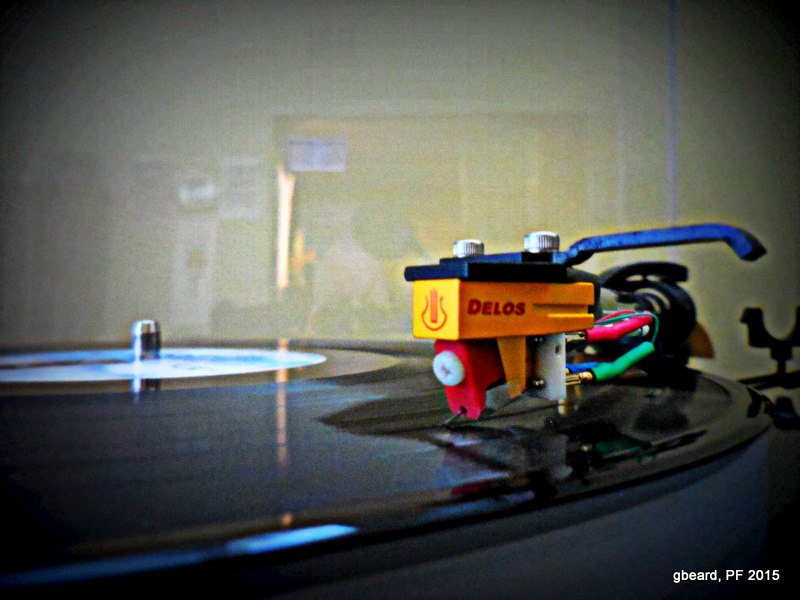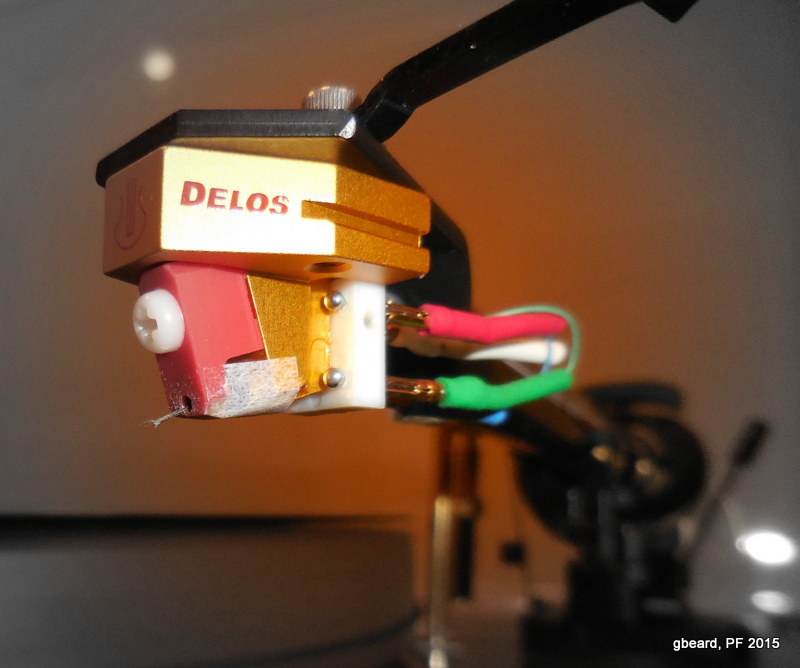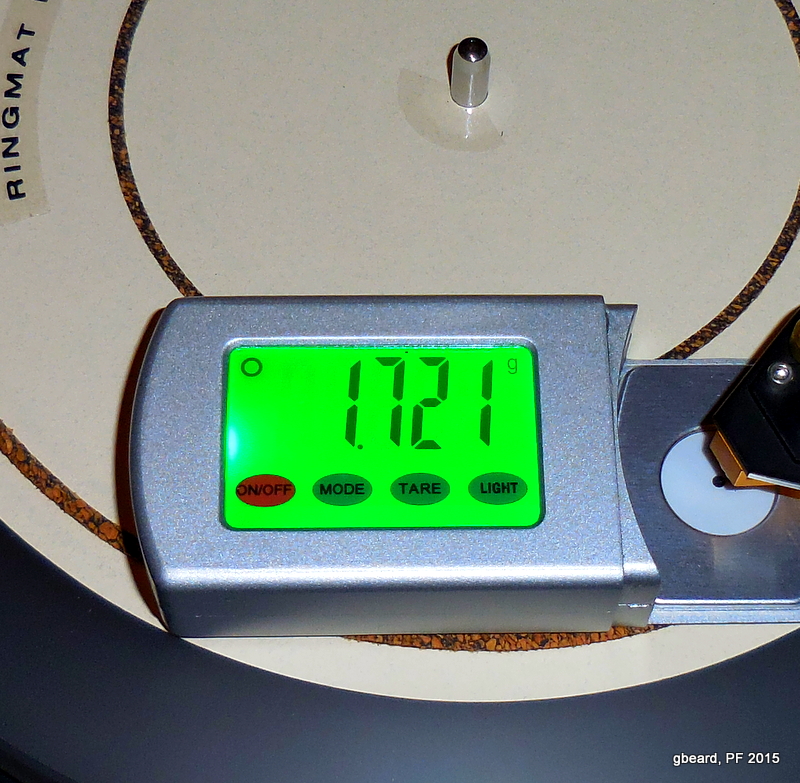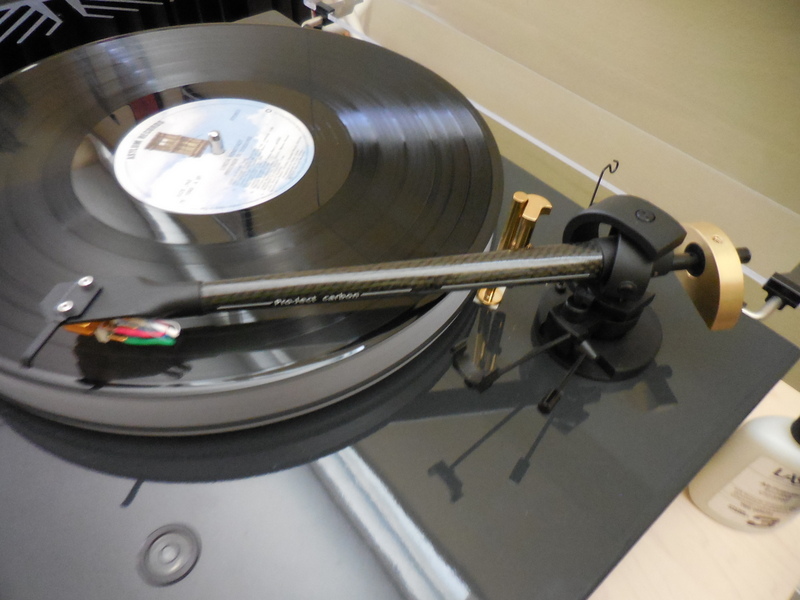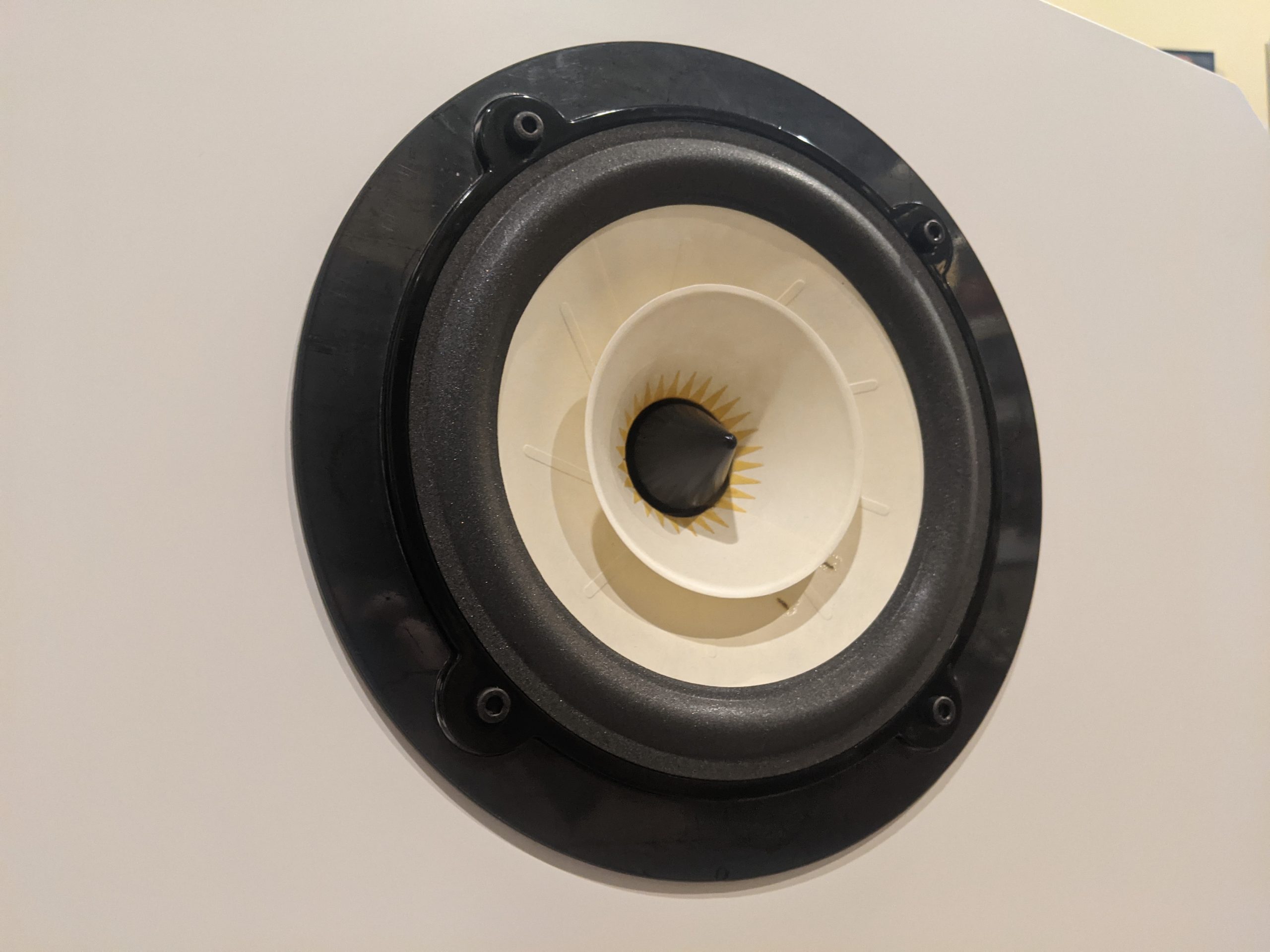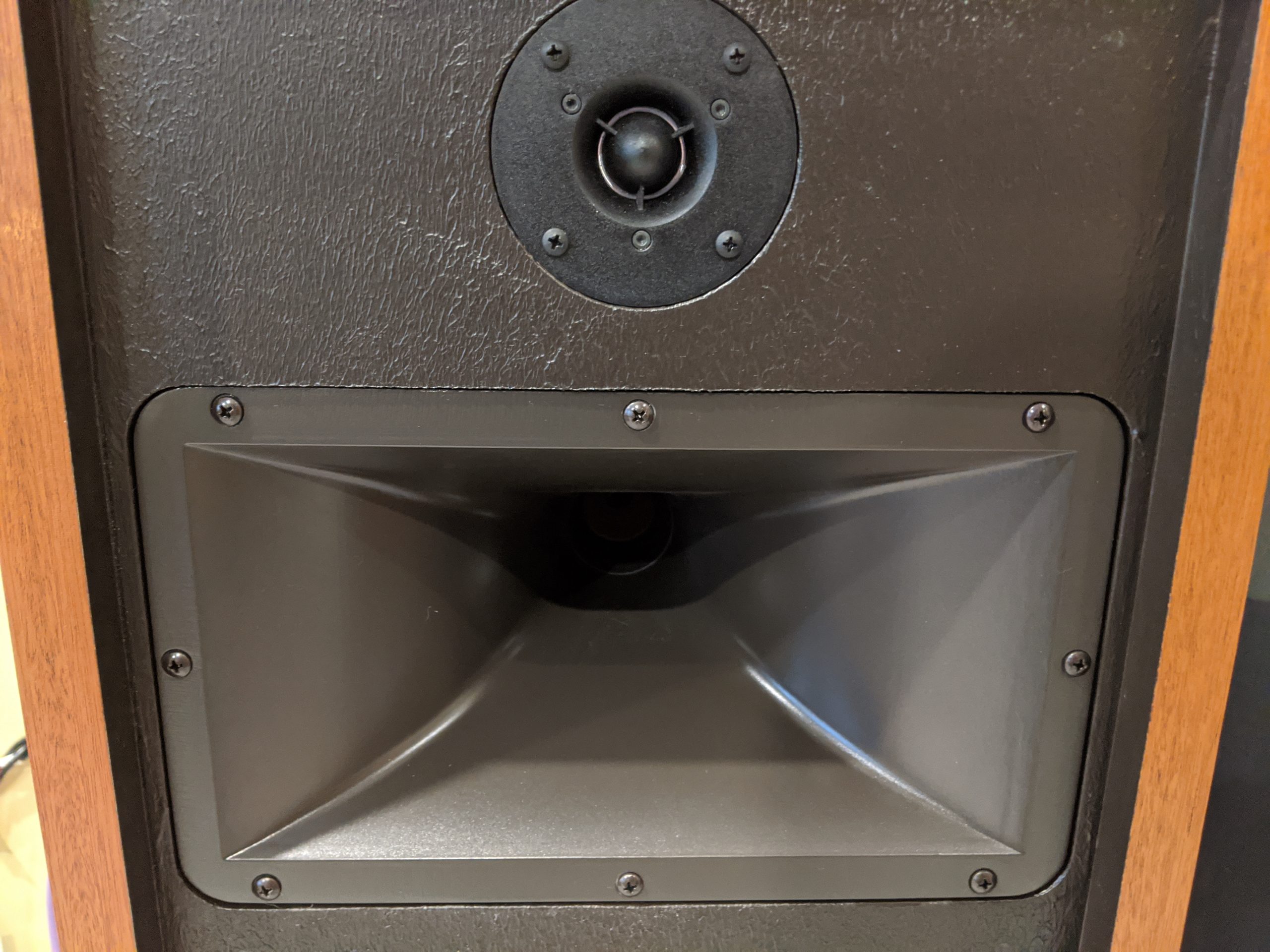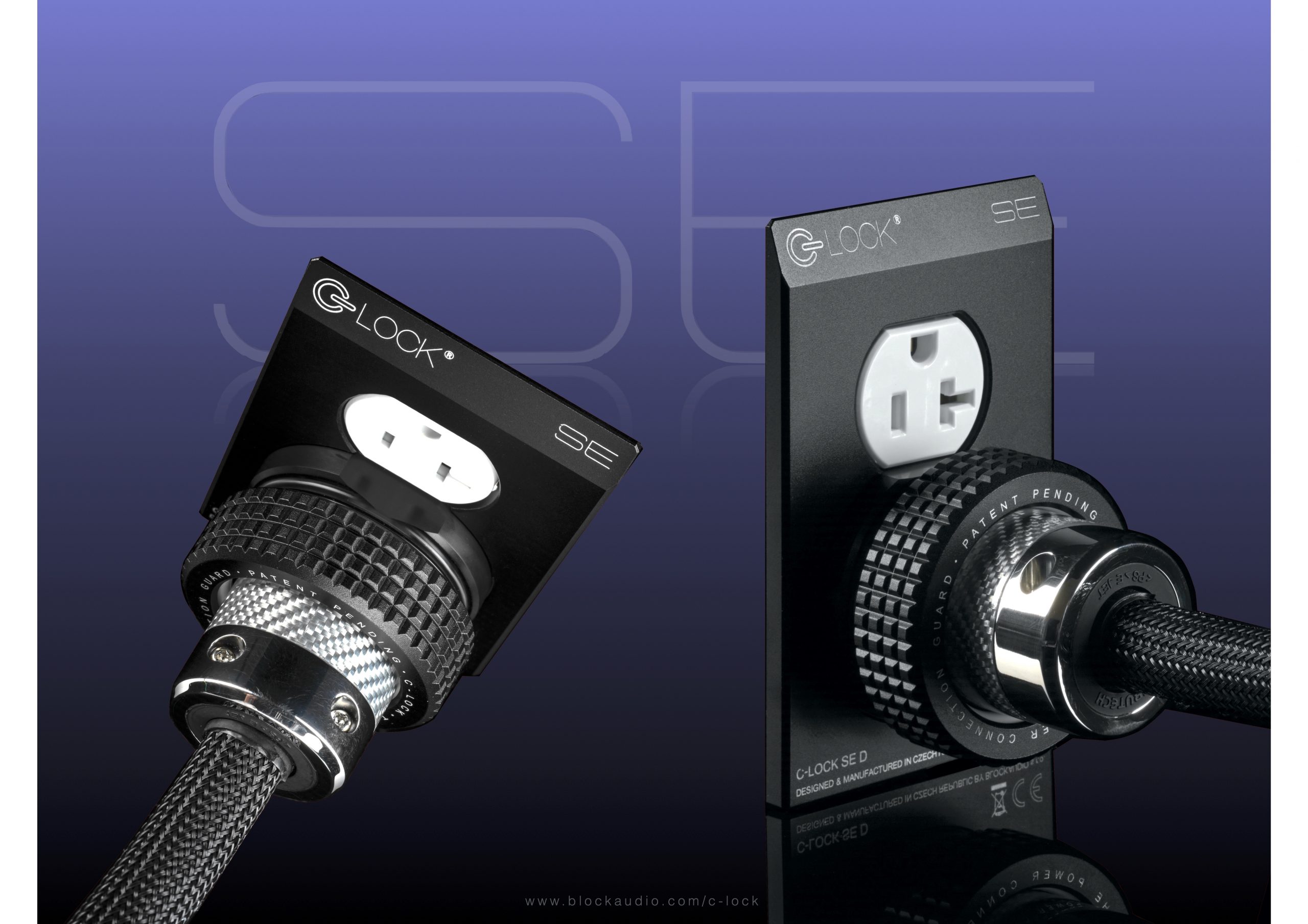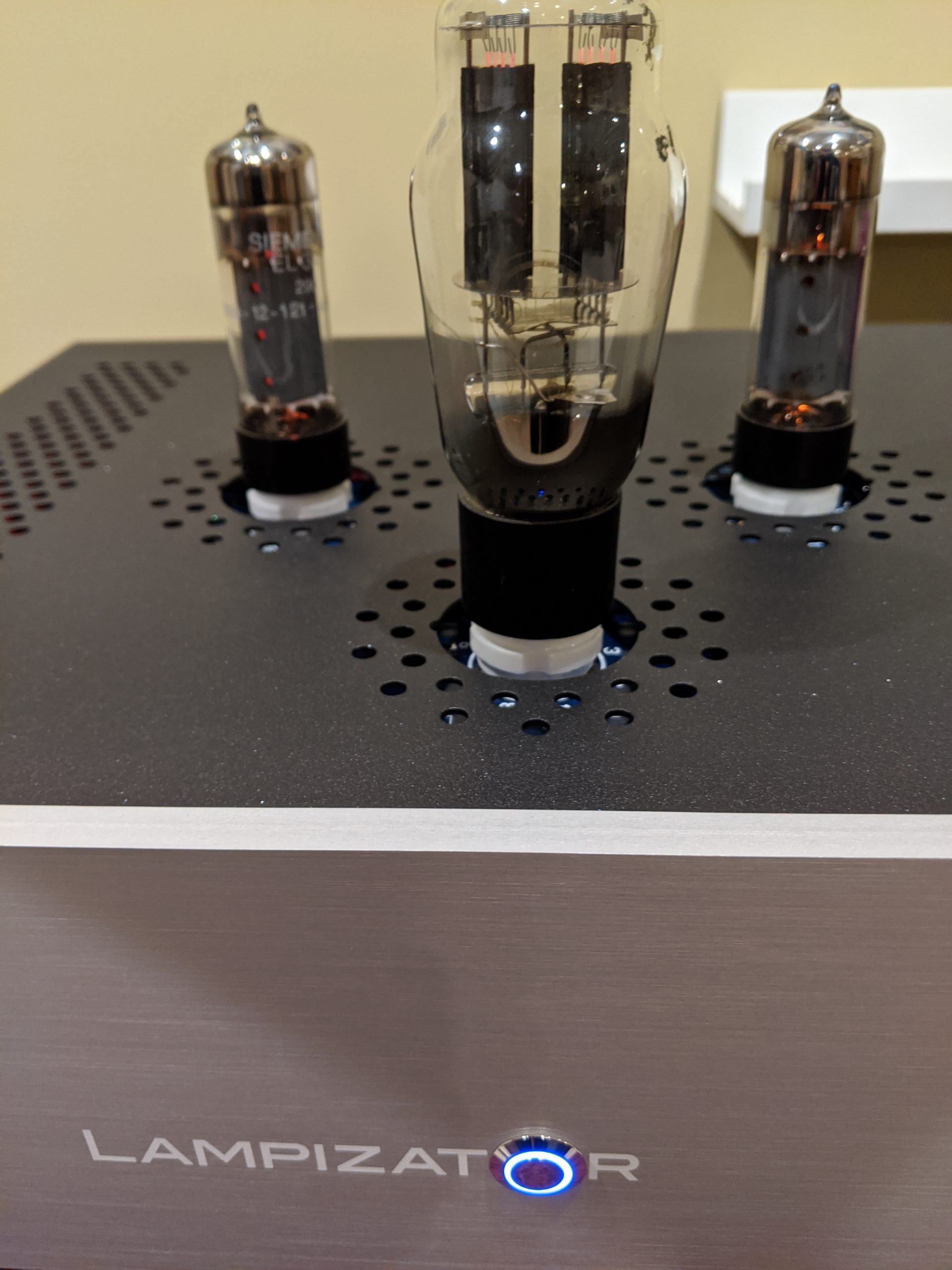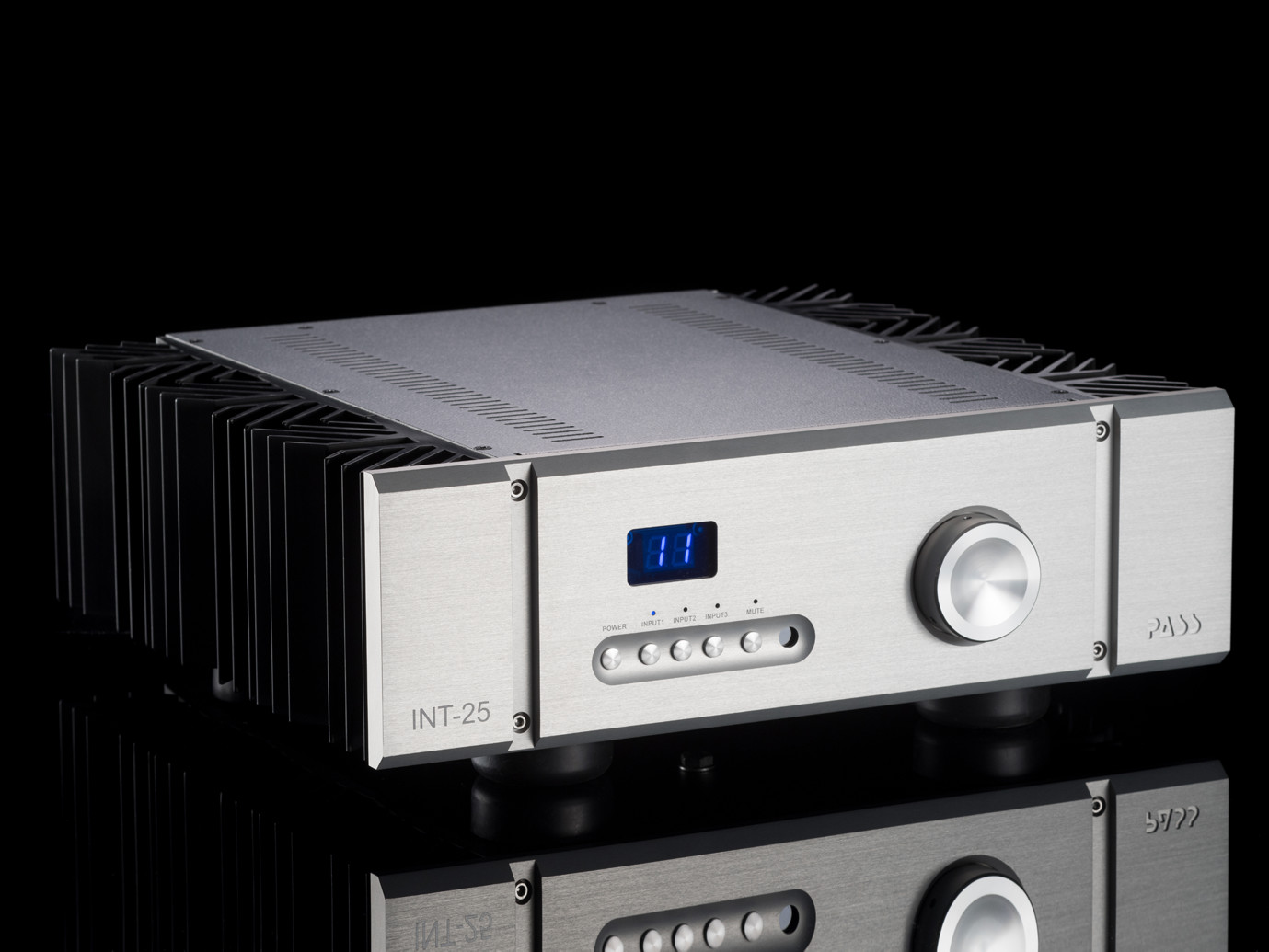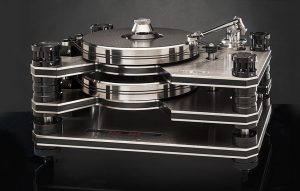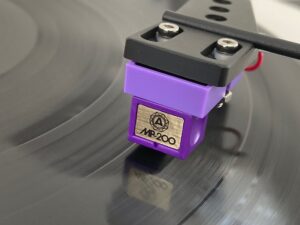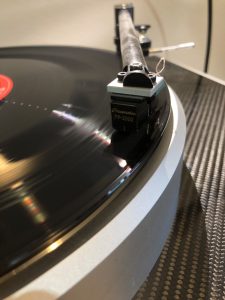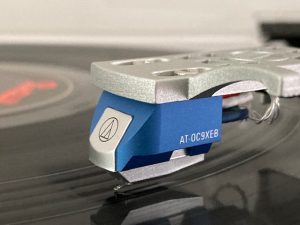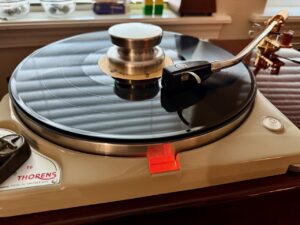Phase Three: The Search is Over!
This is final installment of my three-part series on upgrading my turntable. I've made low budget isolation tweaks, added fabulous accessories, and modified the tonearm wiring and the counterweight. The last piece of the musical puzzle was adding a new phono cartridge. While I let the cartridge choice out of the bag in Phase Two (HERE), it is in this final chapter that I apprehensively dive into the meat of "vinyl rules". As is always the case with fine audio, I've learned just enough to understand how much I still don't know.
Unquestionably, high-end audio can be an extravagant hobby and phono cartridges can be very expensive. But I had a hunch that upgrading mine could end my search for improvement in my analog source. I spent a bit of time researching possibilities. This shiny-new audio-toy needed to fit my personal requirements—great stereo separation, dynamic, good extension, and just warm enough not to be clinical—and it had to be in my allotted price range, as well as be electrically and mechanically compatible with my tonearm and phono stage. As with all of fine audio, matching is everything and many cartridges did not fit the criteria. I asked a few of my Positive Feedback colleagues for suggestions and used those recommendations as a starting point, researching each to narrow the field. Once I picked a leader of the pack, I used Vinyl Engine’s helpful online tools (HERE) to check compatibility, and ultimately purchased the well-respected LYRA Delos Moving Coil Stereo Phono Cartridge. As it turns out, buying the cartridge was the easy part; learning how to set it up properly has intermingled angst with the occasional minor mishap. The end result, however, is a sensibly priced analog system that sings beautifully.
The Delos has landed!
Designed by Jonathan Carr and built by Yoshinori Mishima and Akiko Ishiyama, the entry-level Lyra Delos emerged from its unique packaging looking every bit the miniature red-gold space capsule on a cardboard launch pad. This space cowboy could hardly wait to take control of the stick, and slowly lower the Project 9c to a soft landing on a wavy sea of slippery black grooves. "Smart ass, he is." says Master Yoduh, "Make it as Hifi knight, he won’t…can’t use the Tracking Force." It’s true. My vinyl set-up learning curve has had peaks and valleys steeper than a commodity price graph of the oil used to produce the vinyl. It truly was a near-miracle that I didn’t destroy the Lyra’s stylus before I got it installed for the first time. Sure, I was careful—extremely careful in fact—but these parts/pieces might as well be invisible to a guy with increasingly poor eyesight and a case of corpulentis digititis. It’s all good now, but there were a number of practice launches before I went interstellar. In the end, I learned one very important fact about turntable set-up: You get better every time you do it...
The Selection Committee Meets Good 'Ol Analog Math
Compliance, resonant frequency, mass, output voltage, gain, loading…Ugh. I won’t lie to you; I do not fully grasp the electromechanical fundamentals of cartridges. I am, however, able to figure out cart-TT compatibility by using formula-based calculators, and after finding the Project Carbon 9c tonearm’s specifications, I plugged said specs into these online "cheat sheets" to determine if the Delos would work in my system. After taking into account the mass of the cartridge, arm and stock counterweight to determine the range of cartridge weights that I could use, it seemed the Delos’ mass was just about smack in the middle. I also needed to assess whether the cartridge output would work with the gain structure of my Wright phono stage and 1:10 ratio Wright (Sowter) step-up transformer. The Lyra is a medium compliance, medium output moving coil cartridge with a .60 mV output, so it should work well with the Wright’s 65db total gain. Based upon the Lyra’s 6.3 Ohm internal impedance, coupled with the interconnect capacitance, the total system should load the cartridge just fine, so for now, I will forego worrying about specific loading resistors.
The Frequency of Learning
The Resonant Frequency of the tonearm/cartridge was a mystery to me prior to attempting this upgrade. It is a complex, math-bound subject, and while rooted firmly in physics, there are enough opinions on how it applies to tonearms to add a shroud of mysticism to the hard numbers. It is my understanding that when the arm/cartridge is above or below a specific range of Resonant Frequencies, bad things happen—like audible footfalls, low-end rumble, wobbling movements in the groove, and even jumping out of the groove completely. In order to minimize these nasty possibilities, the general rule is resonant frequency of the tonearm/cartridge should fall between 8Hz and 12Hz; a range with the least impact on sound and tracking. Now, assuming I have not completely butchered that intentionally slim explanation, I recommend you research the subject for more information, as I'm sure I'm only half-correct.
When I first decided to use the Delos with my Project Carbon tonearm, I checked its resonant frequency by using the software calculator available on Vinyl Engine. Simply plug in the total mass of the tonearm plus cartridge, the cartridge's compliance and voila, the resonant frequency of the combination is displayed. My combination fell just under 12, or just over 10, or, who the hell knows? It seems this "simple" process isn't really so simple. I found the mass of arm can be confused; is it 11 grams or 9 grams, or 8.7 grams? It depends on where you look and you must be certain you are using the correct tonearm model—and there are many possible choices with Project arms. Their website tells me the mass of the arm is 11 grams, so of course that is what I used, but I found contradictory information floating about in the analog spaces of the web. The Delos compliance is 12 x 10-6cm/dyne at 100Hz, so I plugged that in too. But then there is that damn asterisk. If cartridge compliance is measured at 100 Hz, as many Japanese cartridges seem to be, then I’m supposed to use a multiplier of 1.5-2 times the 12 x 10-6cm/dyne compliance figure. Not 1.5...Not 2, but perhaps somewhere in between, wherever the gambling-audiophile bets the number, I guess. Oh bloody hell…One thing is certain, the resonant frequency is somewhere between 8 and 12.
There, that’s it…It works and sounds great, that’s all I know.
Installation
I had absolutely zero difficulty mounting the cartridge, and used yet another free online resource, Conrad Hoffman’s free software website HERE, to print out a specific arc protractor for the tonearm. In order to use Mr. Hoffman’s protractor generator, you must plug in specific information about the arm, and choose the type of alignment to use (for the Project 9c, I chose Lofgren A, a.k.a. Baerwald). I measured the arm’s length from the center of the tonearm pivot to the center of the spindle, and plugged the number (209mm) into the software. Then I chose the other parameters as IEC and the software spit out an arc template that would not only set cartridge alignment, but by tracing the arc exactly, overhang as well. Once printed, I carefully trimmed the Letter-sized paper per the instructions, punched the spindle hole, and placed it on the bare platter. All that was left to do was set the cartridge’s overhang by matching one of the two null points and tracing the provided arc, then fine-tuning cartridge zenith alignment to the grid on the protractor and rechecking the arc. This made short and concise work of mounting the Delos. I was extremely happy to have found something relatively easy to use. It is quite possible the Delos is set as close as I can get with my tools and level of experience. Simple and easy, sure...
Yeah, right.
Admittance of guilt: I bumped the stylus a time or two, maybe three, while it was sitting on the arc protractor paper. Thankfully, no injuries occurred, but the old heart jump started more than once, eventually requiring self-medication with a snort of Kentucky’s finest.
Wisdom gained: If a dealer or veteran analog-buddy generously volunteers to set-up your TT, let 'em do it and save that precious premium bourbon for listening!
Admittance of guilt #2: There is way more to setting up a cartridge than I’ve suggested here. I have not yet messed with Azimuth—it looks good on a mirror—deciding instead to wait until I have the proper gear to set it right. With my simplistic tools and basic know how, I’m looking for practically perfect, not dead-nuts on the mark in every way. The chance that I set my new cartridge to absolute precision is far lower than the possibility I lucked into near-faultless alignment.
Wisdom gained: It’s better to be lucky than good, right?
Few truly negative appraisals of the Delos seem to exist—perhaps for good cause—as the Lyra gives very few reasons to be negative. Certainly one issue that comes up for nearly all Lyra cartridges is their low-riding carriage. I admit, after mounting, the look did give me pause. I worried myself to near silliness before I concluded that the cartridge was not a drag, nor sag; it’s just the way Lyra’s track. While the low-slung body was not a concern, I was (and always will be) fretful about the Delos’ Namiki microridge line-contact nude diamond stylus. It hangs out of the cartridge body like a bee’s stinger, just waiting to impale its teeny boron self into, well, anything. It may not buzz, but it still scares me when it comes too close.
No, I’m not kidding.
The Force Be 1.72
Setting Vertical Tracking Force is really pretty easy. I’ve done it many times with the Goldring and other less accomplished cartridges. Because the Delos has a pre-angled body that aligns the signal coils and core with the magnetic field of the circuit, it has a small window of VTF—by spec between 1.7 and 1.8 grams—with a recommended setting of 1.75grams. One experienced in-the-know user suggested 1.72 grams, and it is in fact, an outstanding choice with my gear. The bass is not quite as prominent as 1.75, but the whole audio spectrum seems to be more balanced, letting even more resolution and depth develop. I have a Shure balance scale gauge that works well, and I had always thought it was pretty accurate—until I bought the Audio Additives Digital gauge. After setting VTF with the Shure, I checked it with the digital scale and found my setting with the balance scale was not correct. I won’t blame the Shure, I’m certain it can be accurate in the right hands, but I was not getting VTF set as accurately as the Delos likes it. Getting exactly 1.72 grams, even with a digital scale, can be tough with my rig, and while close may only be good in horseshoes, I think 1.721 is a pretty dang respectable number!
The Lyra Delos Takes Flight!
I was cautioned to give the Lyra Delos a few hours orbiting the spindle before making any claims of scientific discovery or alien encounters, yet it was clear from the first tracing of the Lofgren A arc, the Delos is special. My first listening notes were peppered with exclamation points, and while the Delos clearly had an upward tilt in the treble region that I was not used to, the amazing stereo separation and dynamic prowess knocked my socks off. At the end of listening session number one, there wasn’t even a question whether the Delos was better than the stock Goldring. That is not a slam, the Eroica Maestro sounds very, very good, but keeping in mind the significant price difference between the two, the Lyra should be in a different performance universe, and it is.
The Delos is by a factor of two or so, the most expensive cartridge I’ve owned, so my knowledge of what passes for a fantastic sounding analog system is severely limited. With that caveat in mind, I will now wax lyrically about the baby Lyra. The Delos frequency response is excellent from top to bottom. It does have a brighter, more present, and expressive treble region than the midrange-centric Goldring. After the cartridge settled in for 40-50 hours, the slight hotness I heard in the first few days morphed into a superbly extended and smooth treble response. Besides wonderful upper frequencies, the Delos’ ability to reproduce a bass line is also terrific—taught, deep, and musical. Stereo separation is excellent, ditto resolution, and staging is wide, deep, and dimensional. The warm, slightly tubey countenance of the Wright Sound WPP100C phono stage loves the Delos, and if there is wiriness in the Lyra’s performance, it is balanced nicely within my gear. The Delos has an illuminating presence, with a hint of excitement and extension into twinkly-sparkly territory, but is certainly more neutral than the warmly-tinted Goldring. The Lyra has major jump factor too, and can rouse with powerful dynamics when you least expect it; attacking hard only to decay into nothingness. But my favorite thing about the Lyra Delos is its wonderful ability to create an illusion of stage and venue space. The Delos produces a convincing acoustic picture and digs so deeply into the music, even a poorly treated recording like my well-worn copy of REO Speedwagon's 1972 rock treasure, R.E.O. T.W.O., begs to be turned up to eleven. Yes, the Delos fully exposes its flaws, but it rocks like hell, and takes me back to seeing REO kick ass at a legendary local bar, The Bluebird, in the late '70s. Sweet.
Attack of the Dumbass Returns!
"Don't do dumbass shit." That is a direct quote from my notes while I fumbled around trying to adjust VTA for the first time. I thought Mike Fremer taught me well in Chicago, but the truth is, adjusting the Vertical Tracking Angle for the uninitiated is only slightly easier than replacing a space station chassis bolt on a zero-gravity spacewalk. Unfortunately, I didn’t quite understand; when loosened enough, the tonearm support tower will go slippin’ into darkness. Bam! Gone! All the way down with arm pointing up on an incline like a miniature gantry crane. Yep, an ugly-stupid start for sure. Another of the issues I did not see coming was how the whole arm spins in the mounting hole. The first time I retightened the base screws, I didn't have the arm in the correct place relative to a 360 degree circle, so the arm bumped into the bearing C mount only moments after sliding into the run out groove. Dumbass! I quickly fixed that error.
My first three attempts at changing the VTA did not go well, but after much trial and error, I finally figured out how to use playing cards to crib the arm, changing the attitude in minuscule increments. Better late than never, I guess. However, due to the taper on the arm tube, even when using a ruled line or other measurement device, it’s very hard (for me) to tell when the arm is level. Like I said, good lighting and high magnification…Yah Mon you need it. I was running the arm very slightly down at the pivot in the beginning, and after all the messing; there was a perceptible gain in coherence as well as bass response. After a few more tries, I did eventually learn how to quickly change VTA one card thickness at a time. After my initial tail down position, I brought it up 3 cards, then down two. What sounds like a goofy poker hand, is now the realization that I can adjust vertical tracking angle, listen for the perceptible changes, and make further VTA adjustments by ear. Even sweeter!
Finale, Finally..
On my best vinyl, the MMF-9/Lyra Delos/Wright Sound chain does, in notable ways, sound better than my digital rig. No, the noise floor is never quite as low, but there is an eerie realness amid the noisiness of imitation. Bass may not be as brutish, or extension at the top as soaring, or separation of the instruments as defined. But...But…The width and depth of the stage and the three dimensional presentation can be stunning, and there is beauty in the grooves that connects to my brain in some unmeasurable way. No, I do not believe my analog source is "better" than my digital one, merely different. It is however, nice to say I now more than ever, look forward to spinning black plastic.
Splashdown!
I can't think of one single audio purchase that has given me more "wow" moments than the Lyra Delos. Now that I've heard what my modest rig can do with careful tweaking and a great cartridge, I'd be lying like a rug if I told you I didn't want more of it. If I was fortunate enough to afford the very best, I'd be plunking my money down right now, and Lyra would be at the top of my list. That said, I am already incredibly fortunate. I have a great audio system and vinyl playback that pushes the envelope of modest possibility. I give the lion's share of the credit to the Lyra Delos—it's plainly awesome. So dear readers, my findings are clear. The Lyra Delos/Music Hall MMF-9 combination work remarkably well together and I am getting the exemplary sound I had hoped for when I first decided to retool my analog system in Phase One. If there is more jet-juice in the Delos’ fuselage, it is unlikely I will ever know what I’m missing. Oh, I'll always wonder, and if something changes, perhaps I will make that leap to The Next level of Better, but at this moment, I am in such a state of audio bliss, the thought passes like sand through an hourglass. After 50 plus years of rotating records, I've finally left the babe in the analog woods behind.
And that my friends, is the sweetest outcome of all.
Lyra Delos MC Phono Cartridge
MSRP: $1650 (Available from many fine audio retailers)
LYRA
http://www.lyraconnoisseur.com




